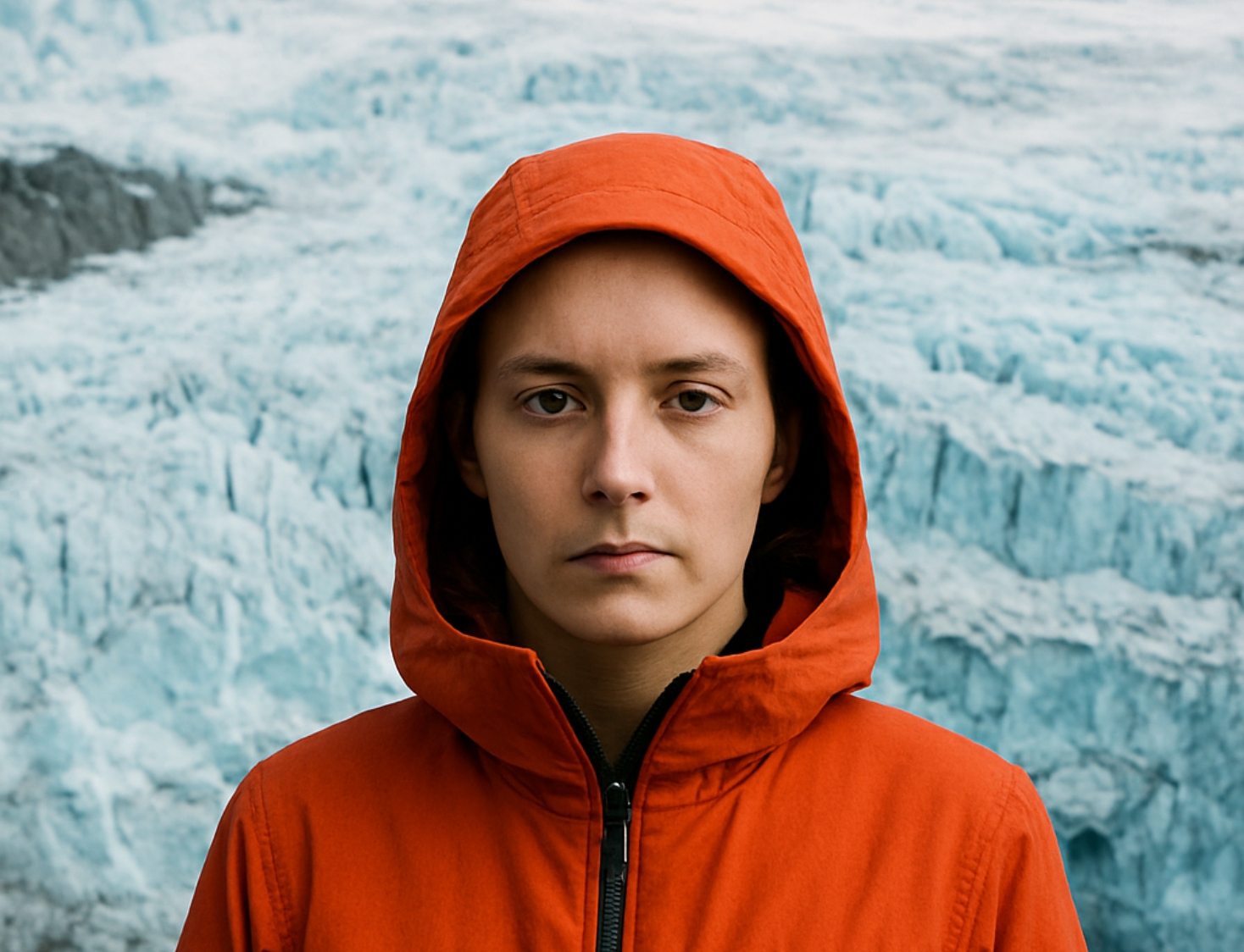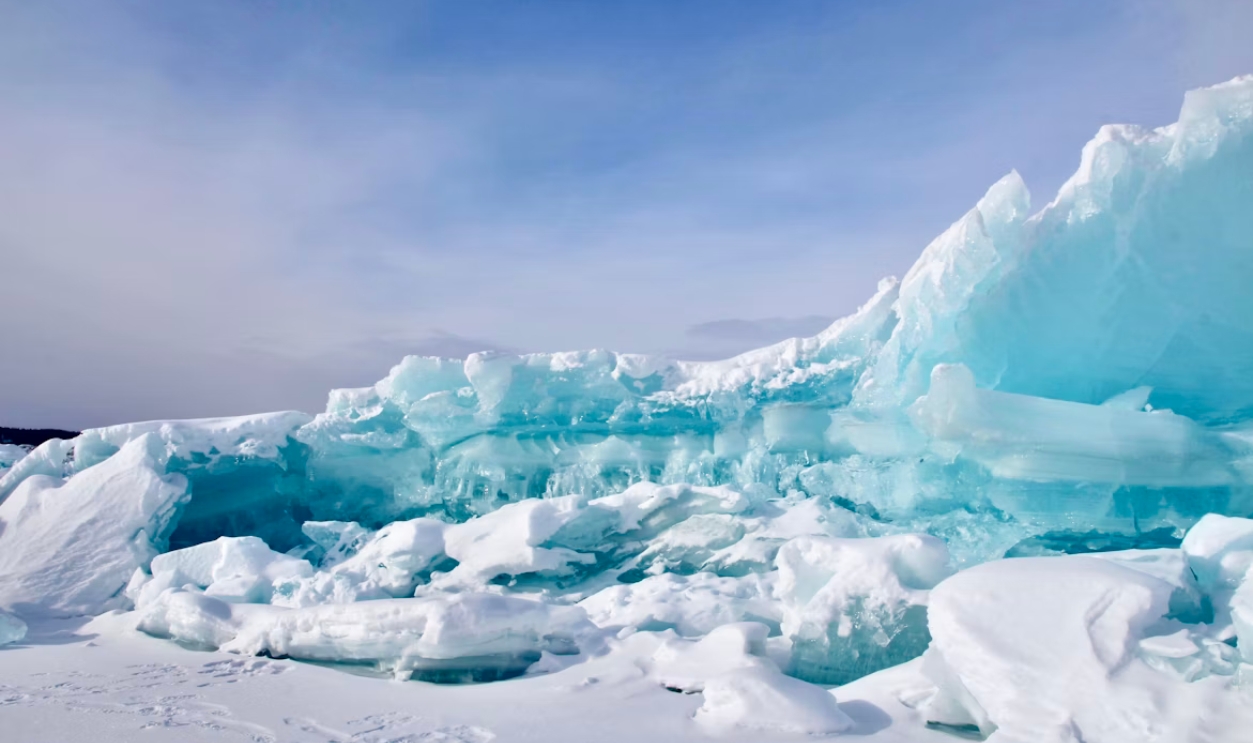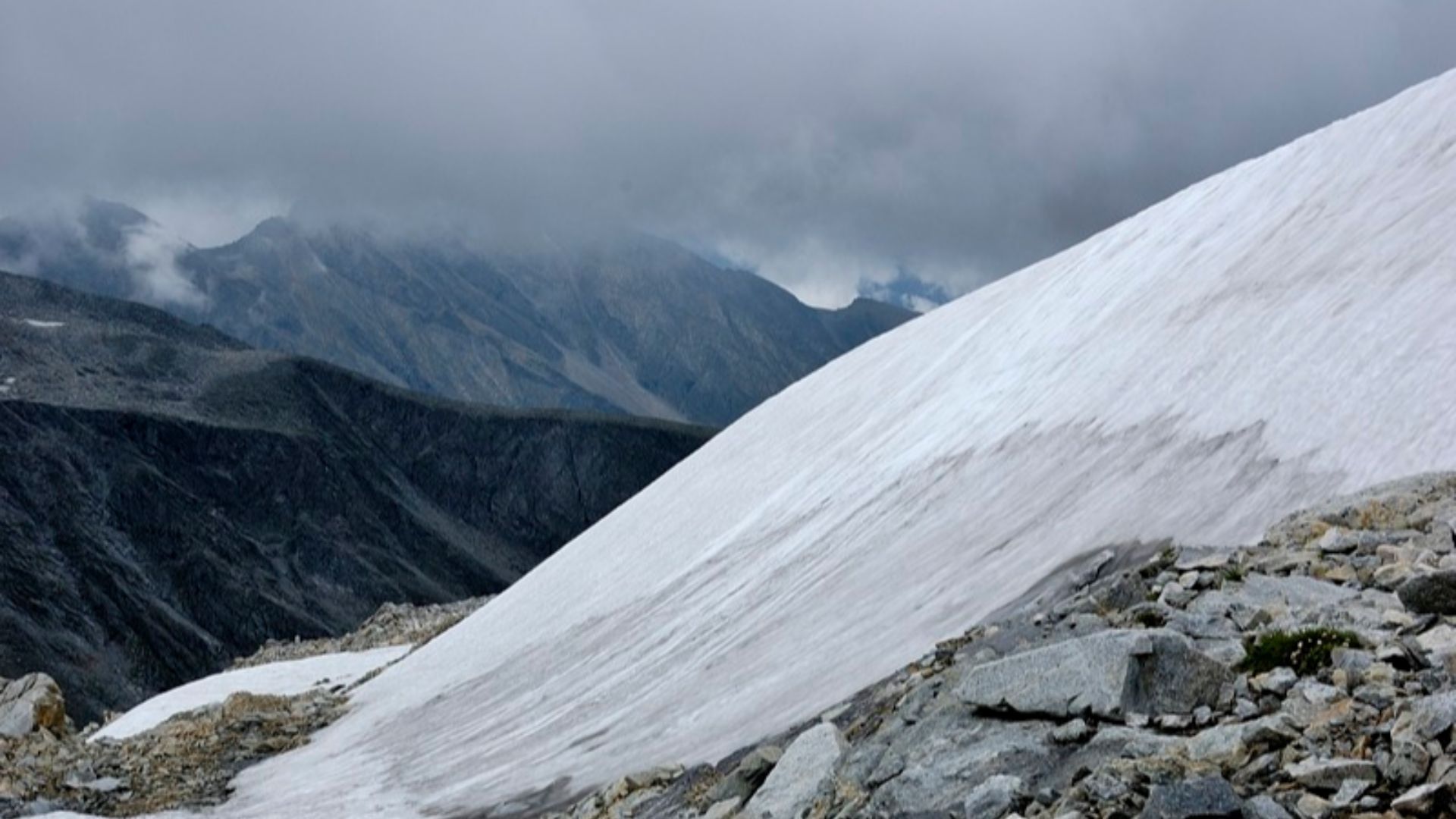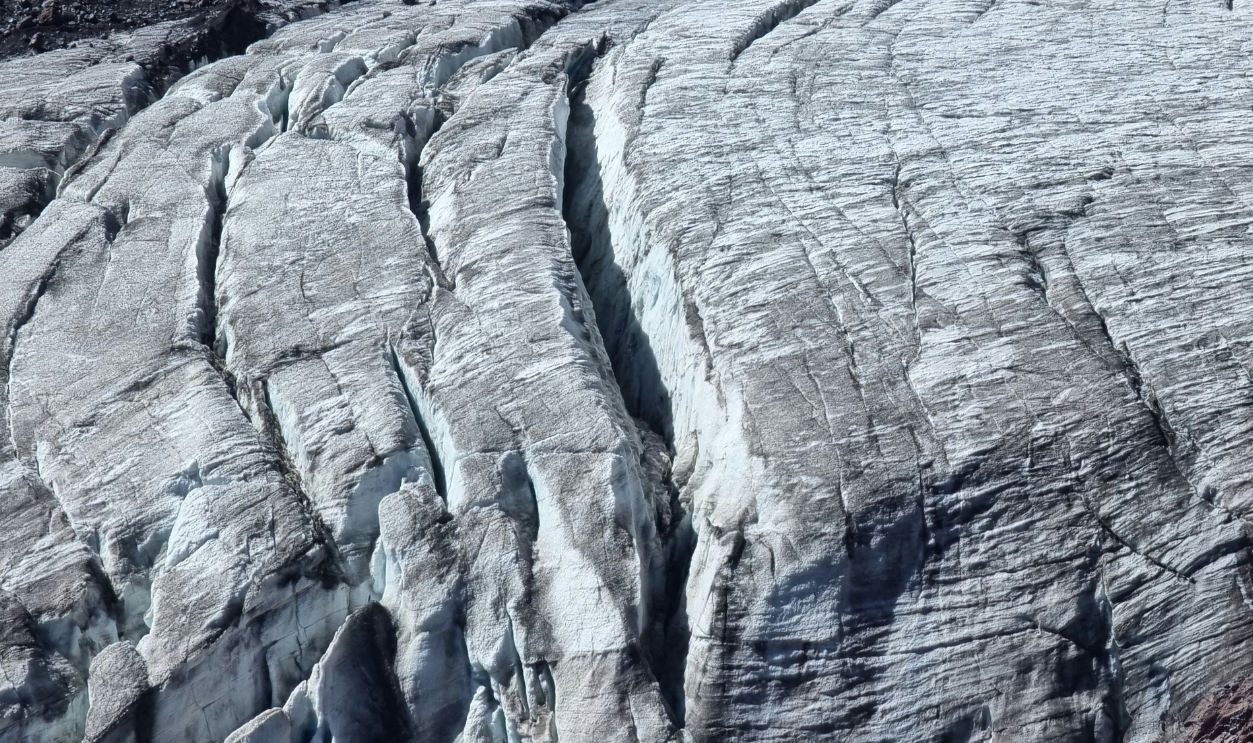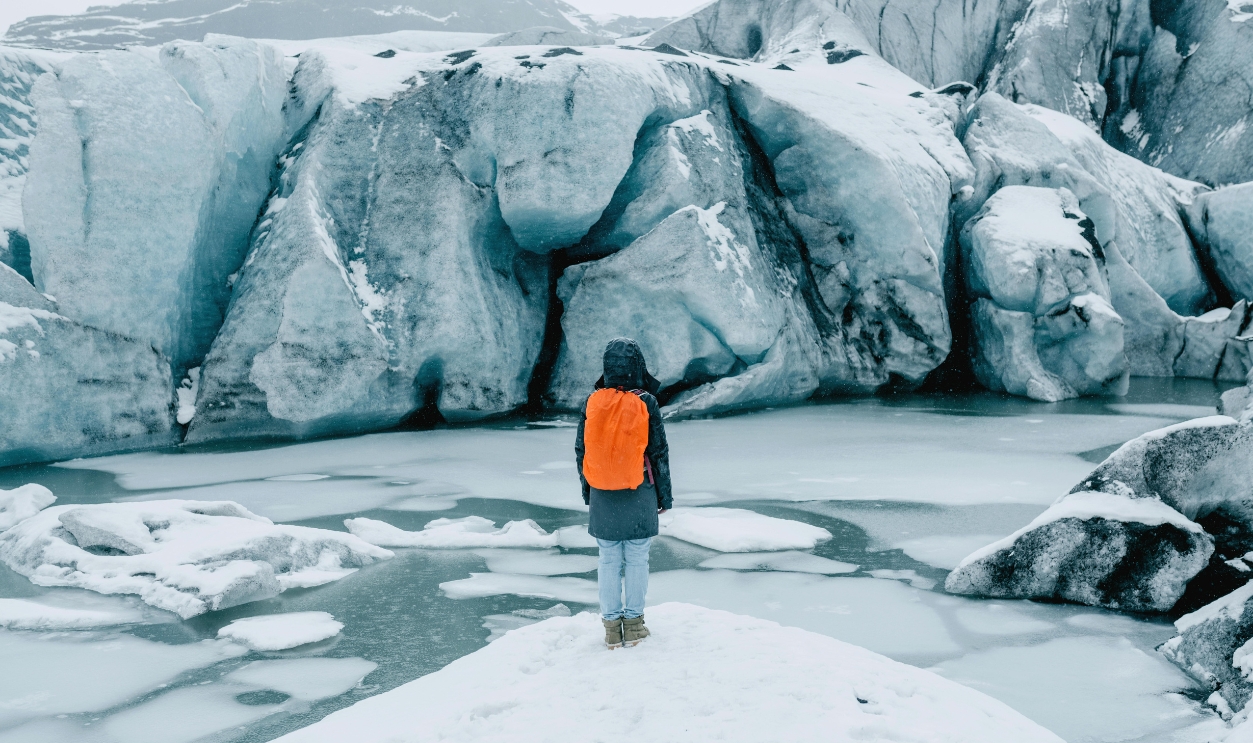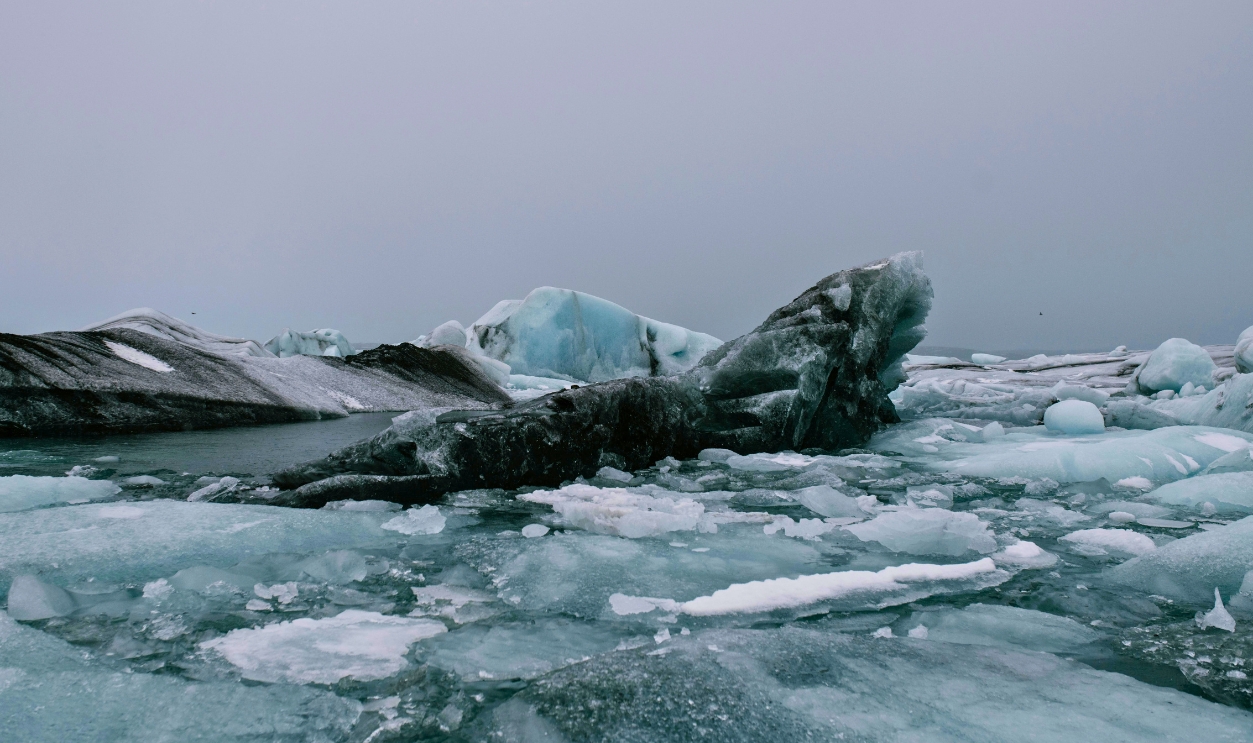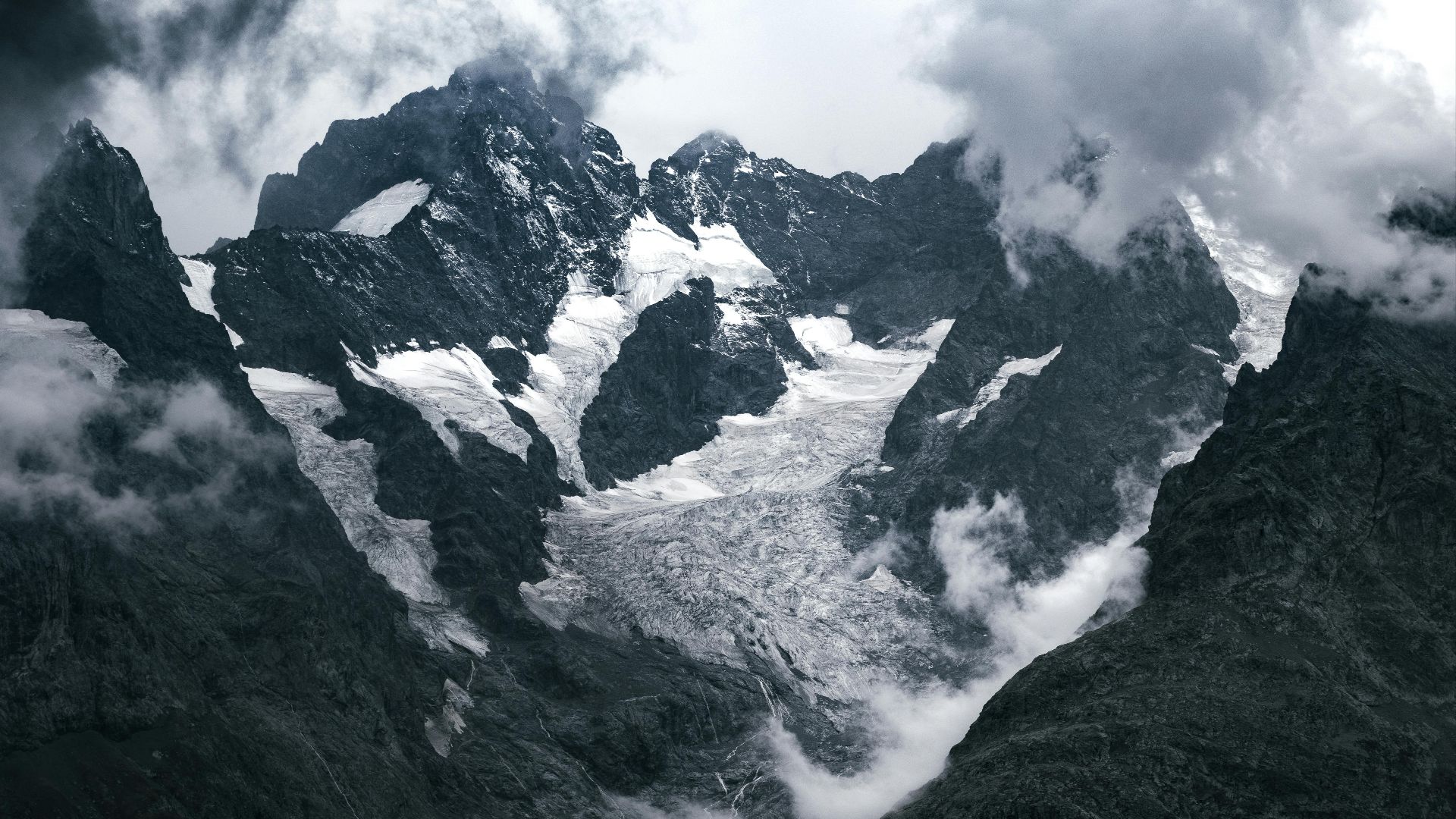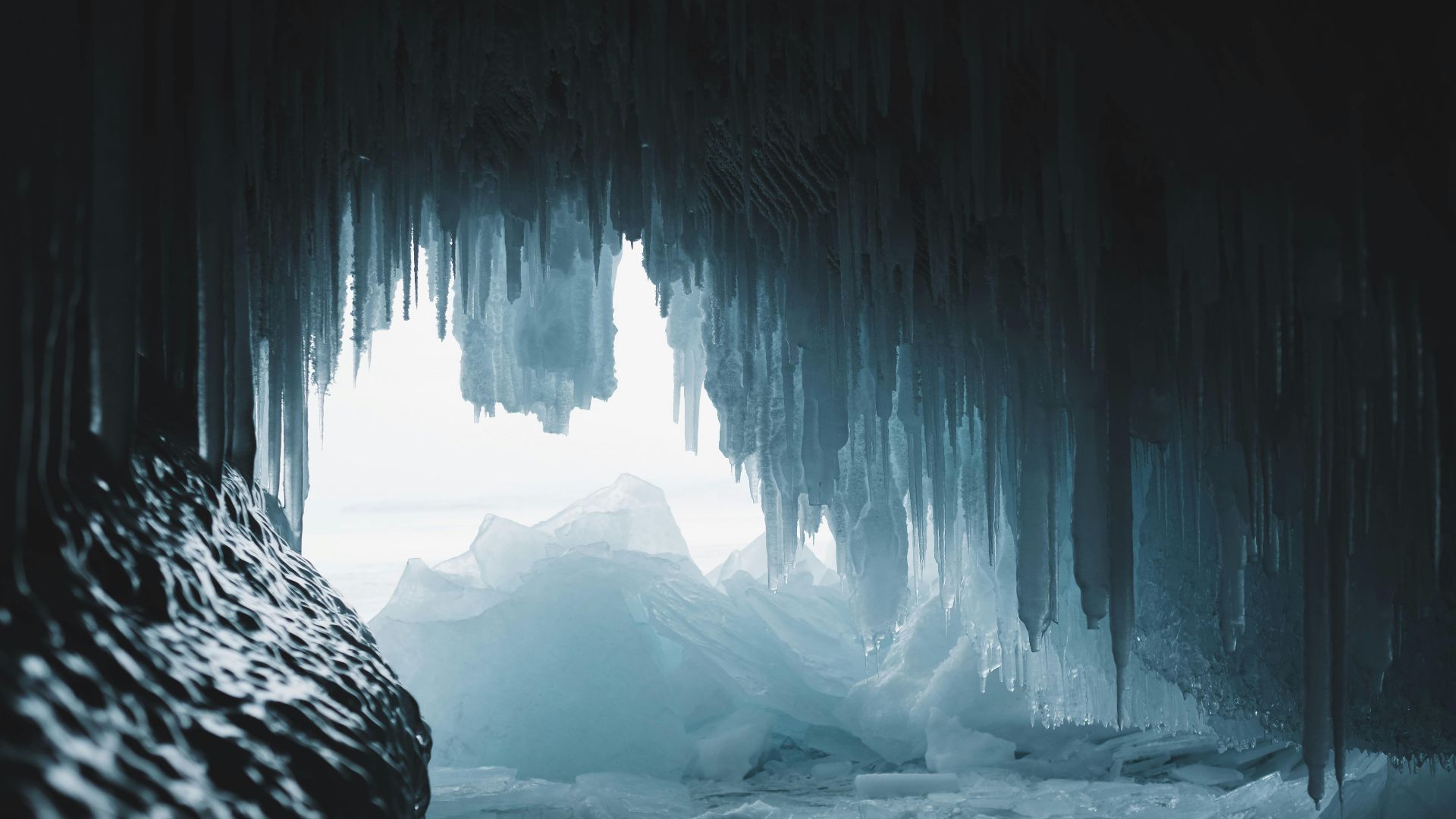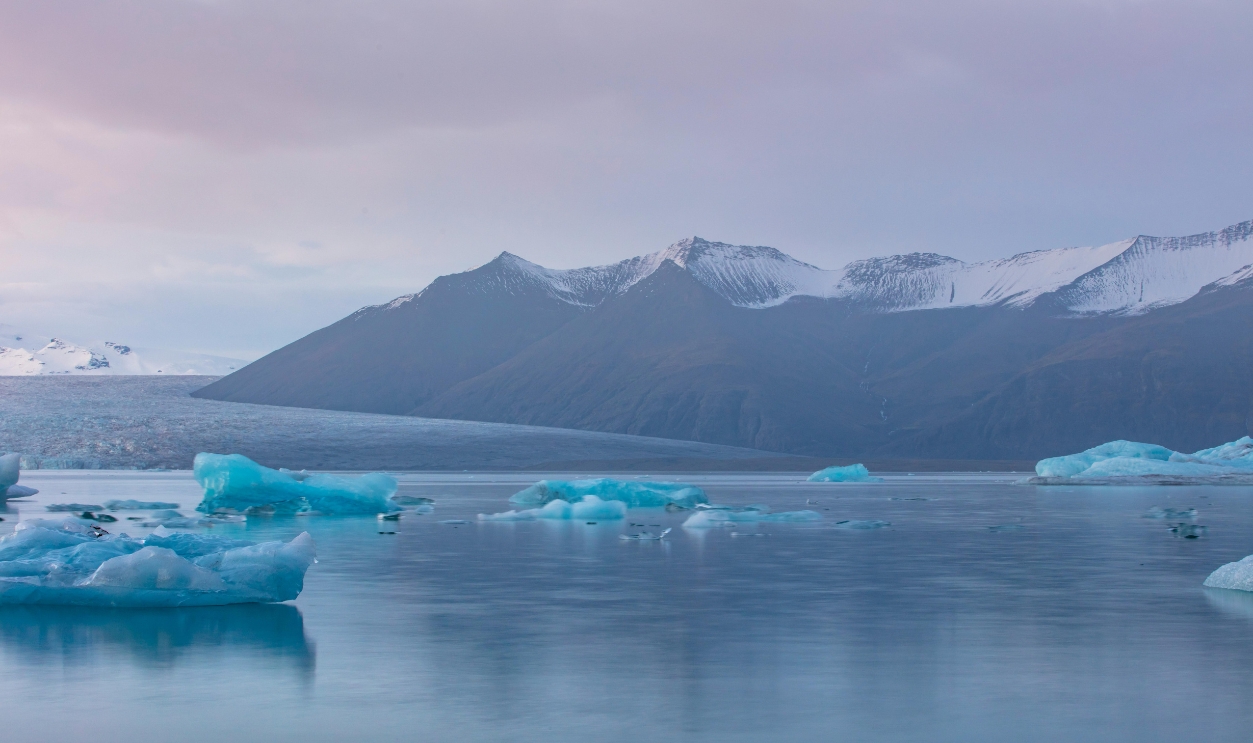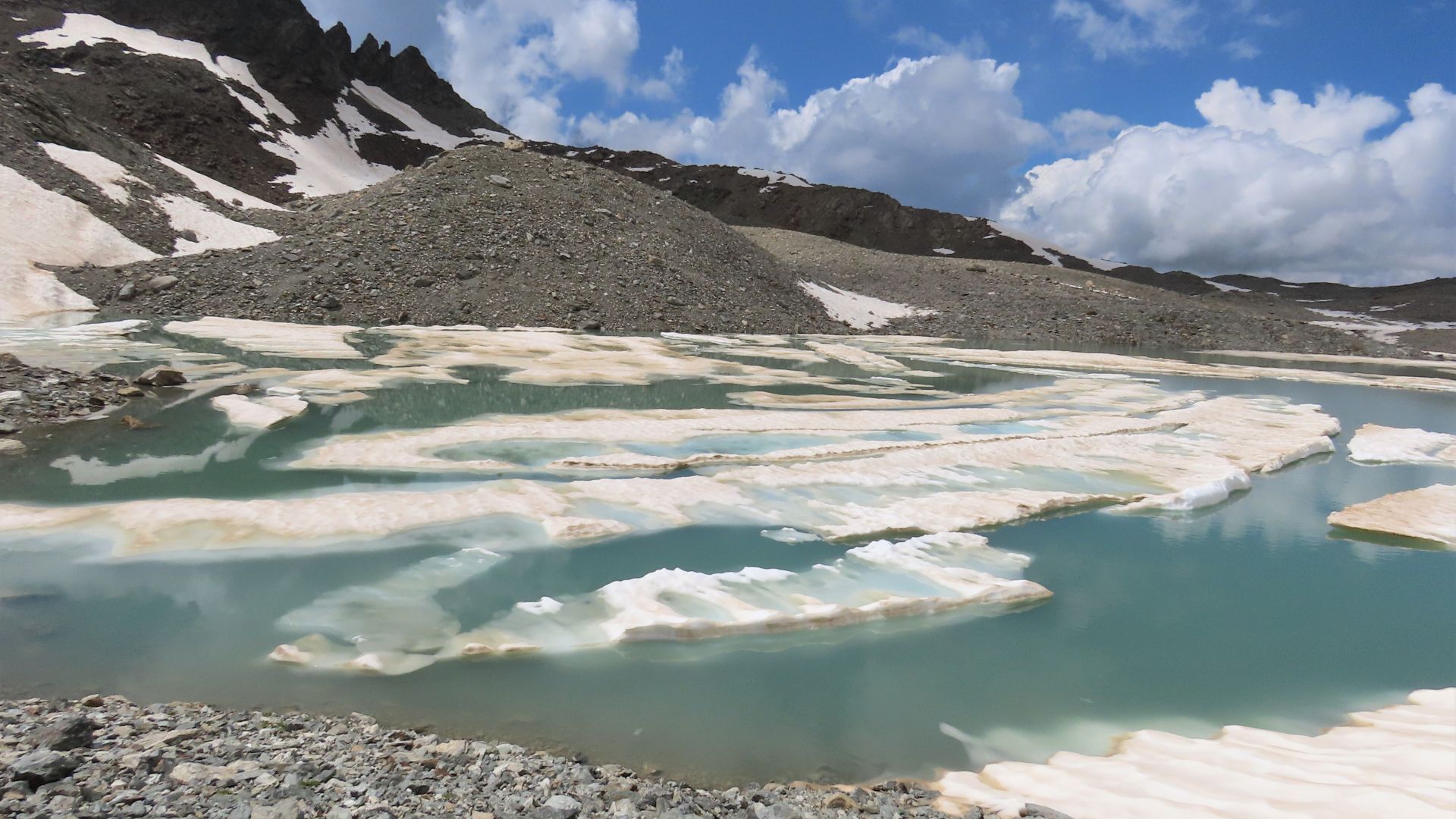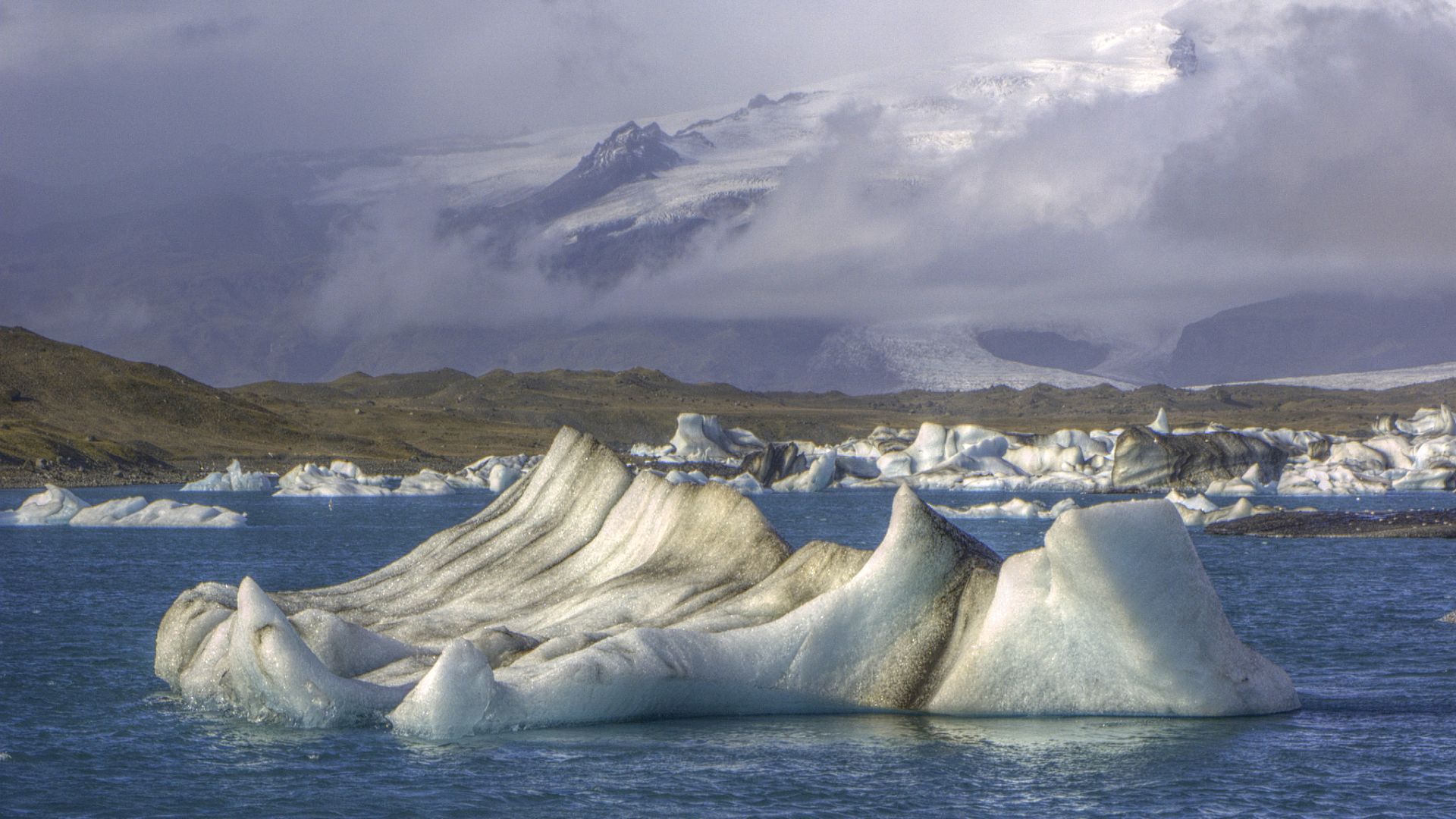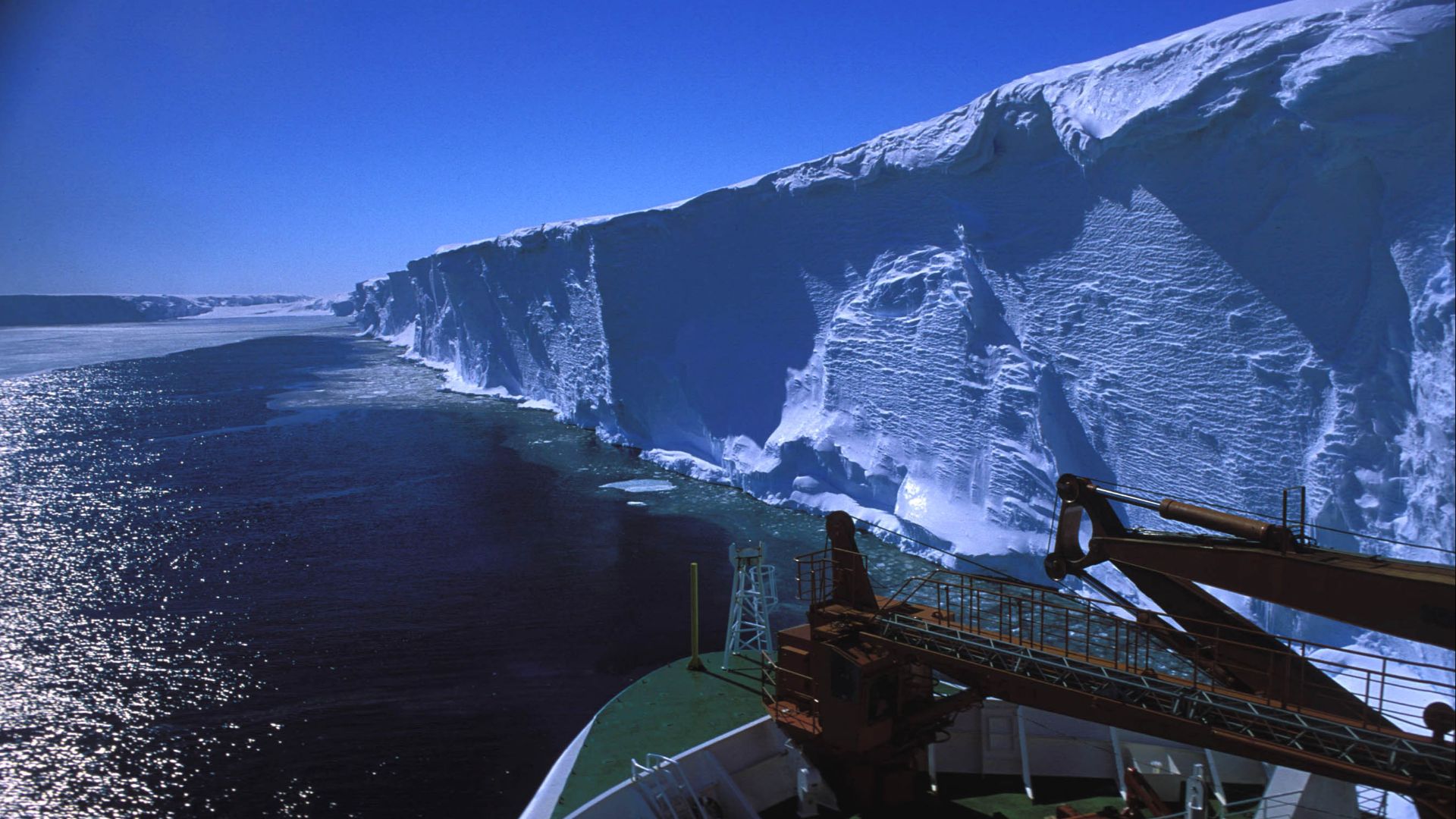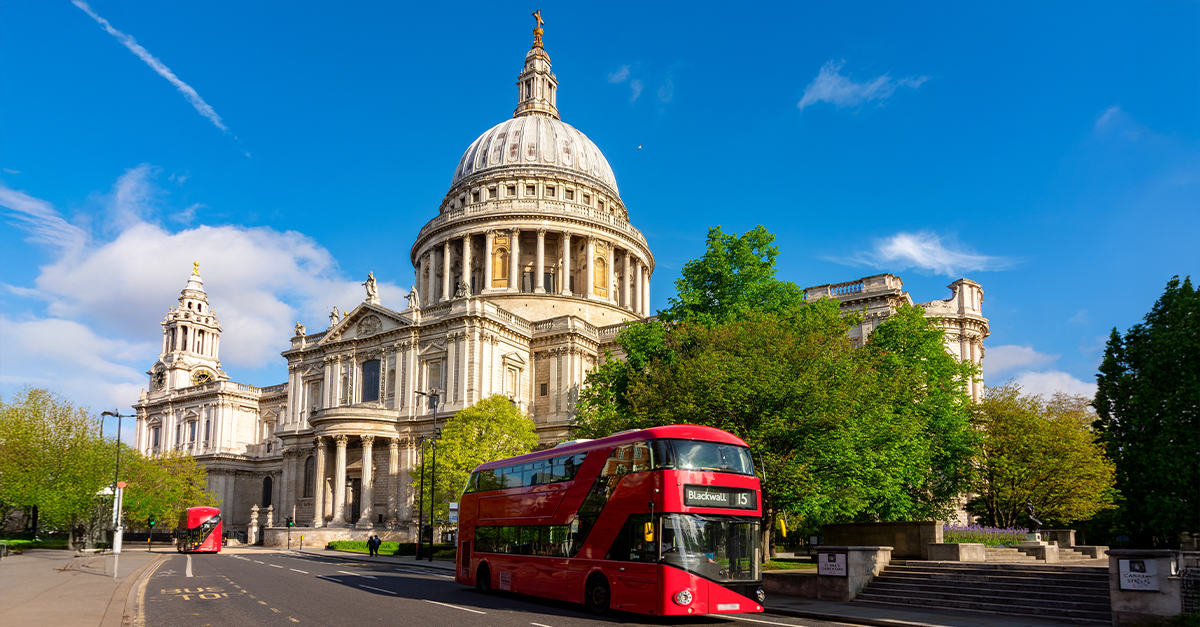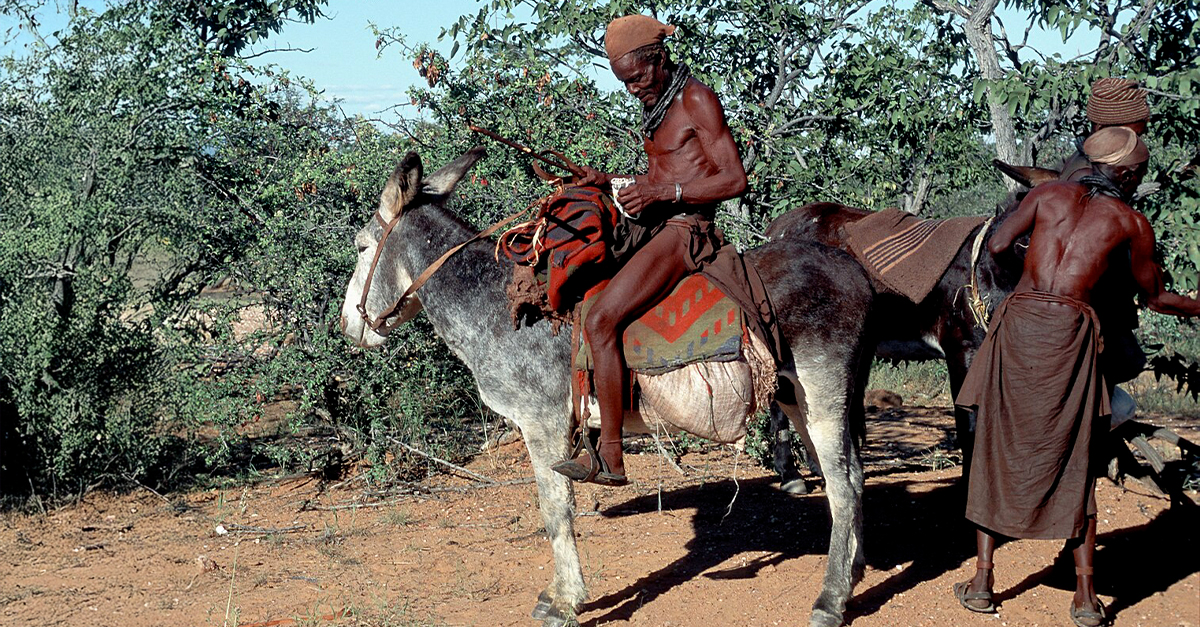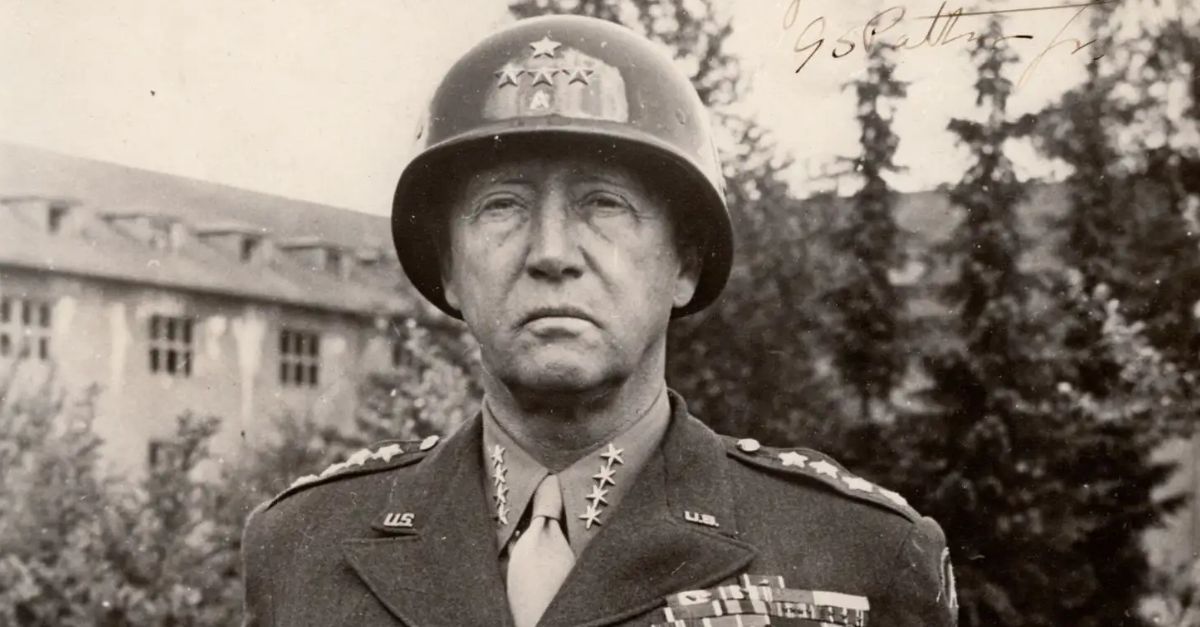Shhh, Can You Hear That?
Glaciers speak differently; in ways most people never hear. With sensors and microphones, glaciologists have captured clicks and rumbles from deep inside the ice. Each sound connects to a movement or a change.
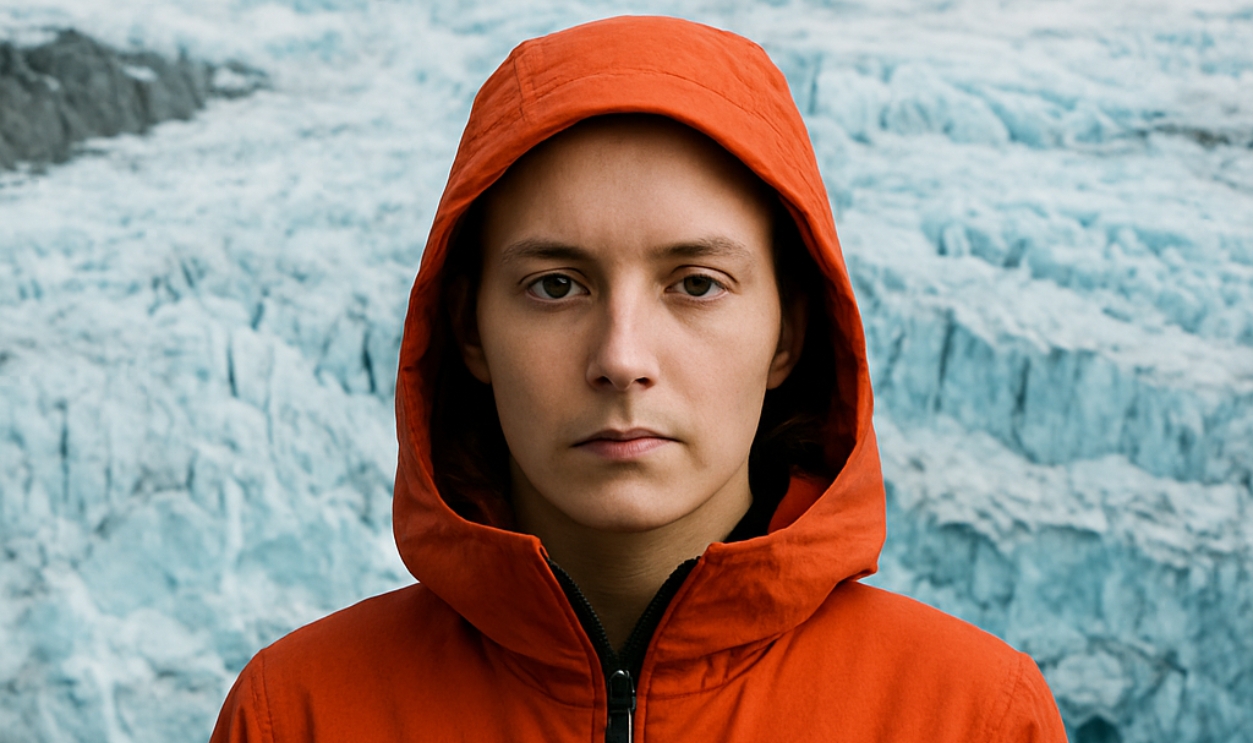
Crackling Surface Melt
It starts with a soft snap, then quickly builds into a scatter of crackling pops. As sunlight warms the glacier’s surface, meltwater slips into tiny cracks. When that water refreezes, it releases sharp, sudden sounds. These noises give scientists clues about how fast the glacier is heating up.
Icefall Crash
Cameras and microphones capture everything to provide precise data when pieces of glaciers, especially seracs, fall. The impact echoes across the valley like distant thunder, which rumbles long after the ice hits. The crash begins when a towering block suddenly breaks loose and barrels down the slope at high speed.
 Dominik Van Opdenbosch, Unsplash
Dominik Van Opdenbosch, Unsplash
Subglacial River Gurgle
Below the thick glacier ice, meltwater carves out hidden rivers that twist through darkness. These buried flows make a low gurgling noise, like a bathtub draining. Using dye tests, researchers link each sound location to real water paths that travel under the glacier's frozen roof.
 Superchilum, Wikimedia Commons
Superchilum, Wikimedia Commons
Firn-Layer Fizz
Beneath the surface lies firn—old, compacted snow filled with tiny air pockets. As warmer air moves downward, it pushes those trapped bubbles through narrow pathways. This creates a soft fizzing sound. Instruments placed in glacier holes detect where this sound is strongest and how deep the warming reaches.
Ancient Bubble Snap
Glaciologists listen closely because these snaps reveal how the ice is reacting to modern climate change. The source is inside the ice from bubbles that have been trapped for thousands of years. When the glacier starts to melt, those ancient bubbles escape with sudden, high-pitched snaps, sharpest during heat waves.
Underwater Bubble Chorus
Tiny bubbles rise from melting ice, releasing soft plinks like underwater raindrops. As they build, the sound becomes a steady hum. When these plinks are heard, it means ice is melting from within. How do glaciologists know? Readings on sonar help. The patterns offer insight into the melting rate.
Moulin Roar
Microphones and seismic tools track these daily roars that rise from within. As water crashes into icy walls, it lets out a powerful sound. It all begins when meltwater drops at high speed through narrow shafts known as moulins deep inside the glacier.
 ImagePerson, Wikimedia Commons
ImagePerson, Wikimedia Commons
Ice-Sheet Hummer
The entire glacier stays in motion as it slowly slides forward. That steady movement creates a deep hum, too low for human ears to hear. However, special infrasound sensors detect it. The hum grows stronger in spring to show that warmer months speed up the glacier's pace.
 Hannes Grobe 20:10, 16 December 2007 (UTC), Wikimedia Commons
Hannes Grobe 20:10, 16 December 2007 (UTC), Wikimedia Commons
Basal Grind Rumble
A deep rumble shakes the ground as gritty ice scrapes along the bedrock. Scientists listen closely to these low vibrations, which reveal the speed at which the glacier is moving. It all works like sandpaper—ice packed with debris grinding slowly against solid rock beneath the glacier.
Cryoseismic Pulse
When big cracks split through a glacier, they send out a slow, rolling pulse that lasts up to 30 seconds. Seismometers detect these signals and pinpoint their origin to the location where the ice cracked. These long pulses become more frequent as spring melting intensifies.
Borehole Whistle
Researchers have recorded sharp, high-pitched noises in glacier boreholes, especially during drilling when ice is dropped into narrow shafts. These sounds shift in pitch as the flow speed changes. The source is often moving water or ice scraping against the borehole walls deep inside the glacier.
 China Crisis, Wikimedia Commons
China Crisis, Wikimedia Commons
Cavity Echo
Shout into a wide cave and hear your voice bounce back; that's the idea behind this sound. Large ice cavities reflect taps into multiple echoes, each slightly delayed. Listening to those echoes and timing them could help map the locations of hidden glacier caves that stretch out beneath the surface.
Seismic Icequake Rattle
A sudden snap deep within the glacier creates a sharp, high-pitched rattle. These rattles happen more often during freeze–thaw cycles. The faster and louder the sound, the larger the crack, offering a clear signal that the glacier’s internal structure is shifting.
Jokulhlaup Roar
Did you know sound could warn of a flood? Oh yes. In Iceland, a deep, rumbling roar signals trapped meltwater rushing beneath a glacier. The noise can last for hours, and tracking this sound helps nearby communities prepare for sudden floods moving silently below the ice.
 Jaredzimmerman (WMF), Wikimedia Commons
Jaredzimmerman (WMF), Wikimedia Commons
Proglacial Lake Slosh
Wind or shifting ice nudges a glacial lake’s edge, setting deep water in motion. The lake responds with a slow, low-frequency slosh that’s usually beyond human hearing. These patterns can also trigger shoreline floods. Who knew a nearly silent wave could move so much?
Calving Boom
A deep boom rolls through water and air as a massive chunk of glacier breaks away. Buoys nearby pick up the impact instantly. Scientists analyze the recordings to gain a deeper understanding of the phenomenon. That thunderous sound marks the precise moment the ice meets the sea with powerful force.
Subglacial Flood Impulse
This sound reveals a powerful release—meltwater crashing through a glacier and slamming into the ground below. Seismic stations pick up the sharp thump, and using its speed and timing, experts use the data to understand how quickly massive glaciers drain water hidden deep beneath the ice.
 DCheretovich, Wikimedia Commons
DCheretovich, Wikimedia Commons
Iceberg Capsize Clap
Hydrophones pick up a sharp, underwater clap just moments after the crash. The sound is a valuable source to help estimate the iceberg's original tilt and size. Before that, the fjord would be still, until one massive slab flipped violently and sent a single, echoing boom through the water.
 Virtual-Pano, Wikimedia Commons
Virtual-Pano, Wikimedia Commons
Wind-Tunnel Flap
These steady, mid-range tones often point to weak tunnel sections under strain, and they point to where collapse may happen next. To audiate it, imagine a flag caught in strong wind. That's the kind of sound glacier tunnels make when air rushes through at 10 to 15 miles per hour.
 GabrielleMerk, Wikimedia Commons
GabrielleMerk, Wikimedia Commons
Surge Tremor
If a glacier moved beneath the surface, this was the sound it left behind—a low, shaking tremor that lasted for days. That deep vibration revealed more than motion. It marked a shift in the ice itself, a slow but forceful push through bedrock.
 Andreas Tille, Wikimedia Commons
Andreas Tille, Wikimedia Commons
Rock-Pluck Clatter
As the glacier moves forward, it plucks rocks loose and drops them into hidden hollows. These rocks fall with a sharp impact, clattering and echoing with sharp mid-high tones. Scientists track those bursts to estimate how fast the glacier is eroding the rugged floor beneath the ice.
 Andreas Tille, Wikimedia Commons
Andreas Tille, Wikimedia Commons
Sheet-Scale Groan
It begins with a groan so deep it pulses five times each second. As massive sections of ice slide, GPS tilt sensors capture both the sound and the angle shift. Altogether, it feels like the glacier is exhaling, which tells glaciologists just how slippery the base has become.
 Martin St-Amant (S23678), Wikimedia Commons
Martin St-Amant (S23678), Wikimedia Commons
Thermal Breathing
As sunlight warms the glacier, it expands. Then at night, it cools and contracts. These small daily changes move the ice just enough to create what scientists call thermal breathing. Laser microphones measure these subtle shifts. This phenomenon aligns almost perfectly with the daily temperature fluctuations.
 Diego Delso, Wikimedia Commons
Diego Delso, Wikimedia Commons
Shelf-Edge Drone
A slow, steady drone pulses where floating ice meets the sea. Coastal buoys pick up the sound, but they are unique from the typical ocean noise. The shelf bends with each passing swell, and as the waves press in, they coax out this deep hum that signals glacial motion.
Glacial Singing
These vibrations fade as the ice softens to offer a subtle signal of warming. Before that, they can last for over an hour, rising gently from tiny cracks that begin to vibrate together. The sound becomes a layered song, and the glacier hums quietly across the frozen calm.
 Jakub Halun, Wikimedia Commons
Jakub Halun, Wikimedia Commons

